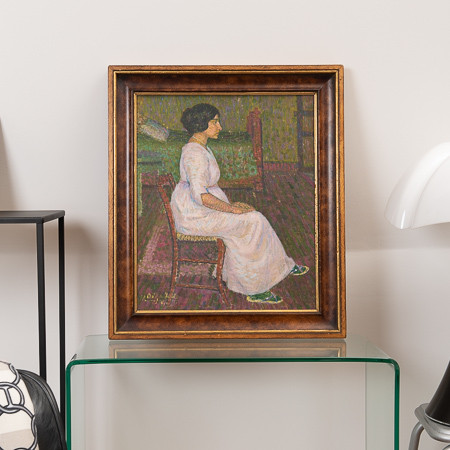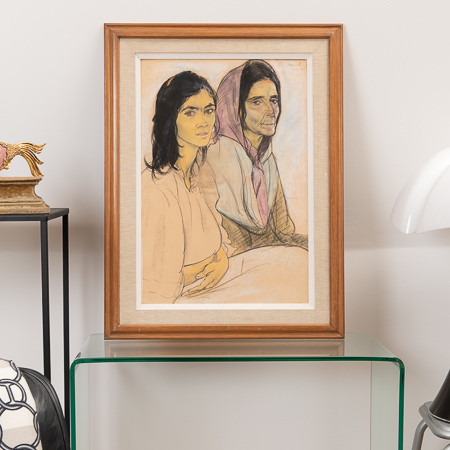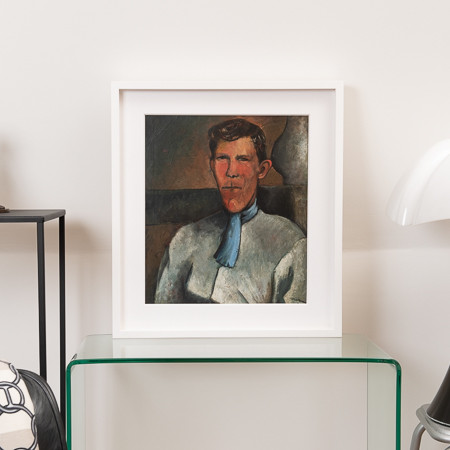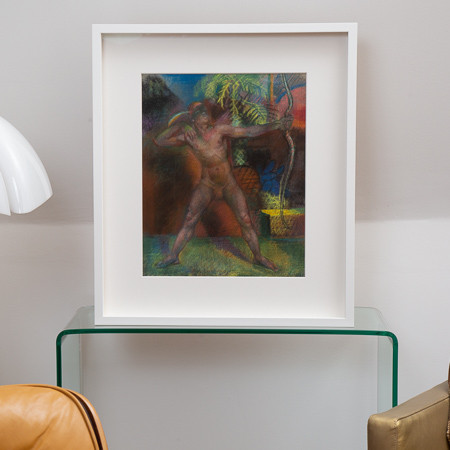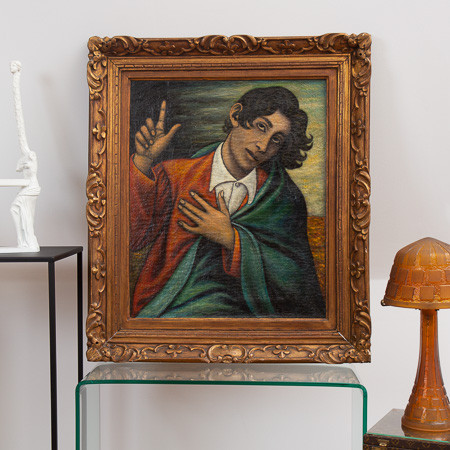About
Seated Red-Haired Woman, oil on canvas from 1903, signed twice at the bottom left «J Puy» and bearing the stamp of the Ambroise Vollard estate on the back.
It was during his Fauvist period that Jean Puy (Roanne 1876 – 1960) painted Seated Red-Haired Woman around 1903, signed twice in the lower left “J Puy.” Initially an Impressionist and Neo-Impressionist, he turned briefly toward Fauvism between 1902 and 1907. He joined the group that included Matisse, Derain, Marquet, Manguin, Camoin... However, as Seated Red-Haired Woman demonstrates, his style embodies a reasoned form of Fauvism, avoiding the distortion he viewed as excessive in his friends’ work. Still, embracing the Fauvist vocabulary, he bathed his canvas in intense, saturated colors.
This is an unflinching portrait; the painter captured the emotion of his subject. Her half-closed eyes and downcast expression face the viewer with melancholy. She poses in a loose-fitting nightdress, barefoot, as if just risen from bed. Her casually worn garment is modeled in shades of white and shaped by a subtle play of folds, shadows, and light. This woman, her pale body contrasted with her flaming hair—a beauty ideal of the time—recalls Mimi la Rousse, a model often depicted by painter Charles Camoin (1879–1965).
In the Catalogue raisonné de l'œuvre peint de Jean Puy, Marion Chatillon-Limouzi, along with Brigitte and Jean-Luc Rocher, offer insights into the artist’s motivations in the chapter titled Women of a Life: “The nude studies carried out in the intimacy of his studio or with his Parisian friends reveal Jean Puy’s deep interest in the female figure. Extremely demanding, almost obsessive, he remained attached to six models who marked his personal pursuit of feminine representation.”
“Jeanne Olive Le Marc’Hadour, a young model of Breton origin, became his partner in 1903, although he did not marry her until 1922. He referred to her as my wife or Madame Puy, and never depicted her fully nude. They divorced in 1924, two years after their official marriage.”
Our Seated Red-Haired Woman is very likely a depiction of Jeanne Olive Le Marc’Hadour.
Jean Puy met Charles Camoin during exhibitions at the Salon des Indépendants and the Salon d’Automne. In his early Parisian years, Puy and his group of friends frequently gathered to experiment and discuss their artistic research—and most likely shared their models. Although this painting features a red-haired woman, most of Puy’s portraits depict brunettes. The seated female figure is a recurring theme in the artist’s work, where models are generally placed on chairs or sometimes directly on the floor. The space is structured around the vertical lines of the window, curtain, and chair, and the horizontal lines of the window and fireplace. The composition creates movement through its color treatment, enhanced by a rich palette, and reveals striking energy in the brushwork. The stroke is swift, and the use of color favors bright, bold tones.
This painting captivates with its meditative realism and draws viewers into early 20th-century daily life. The work breathes the artist’s affection for women.
The painting bears the stamp of the Ambroise Vollard estate on the back. Indeed, it was as early as 1905 that Jean Puy entered the circle of Ambroise Vollard, one of Paris’s most influential art dealers, who offered him significant support. Through Vollard—tasked by major collectors with selecting representative works by contemporary French artists—paintings by Jean Puy entered Sergei Shchukin’s Moscow palace and the Hahnloser collection in Switzerland. Furthermore, it was at Vollard’s request that Puy joined the group known as the École d'Asnières.
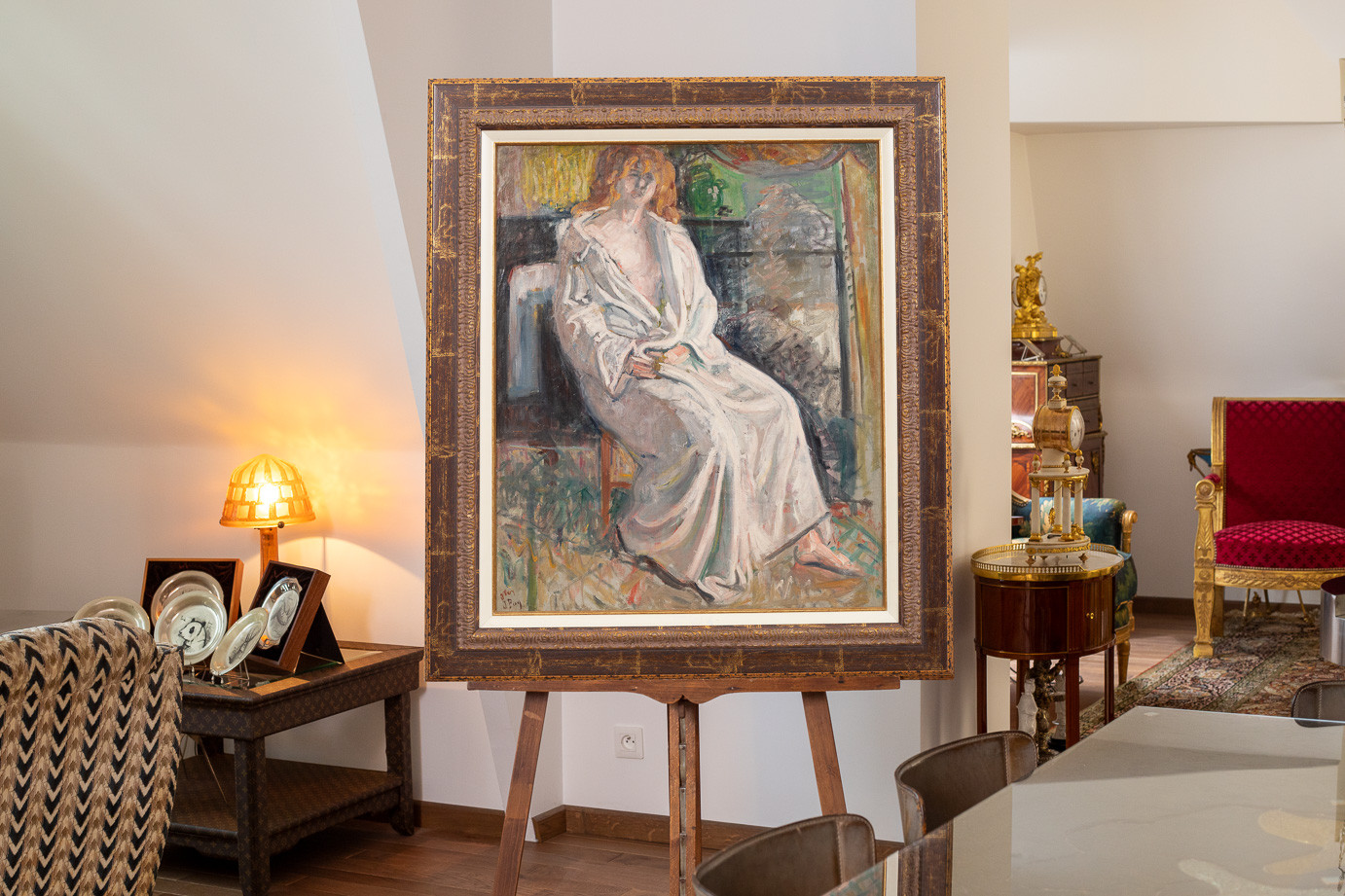
Characteristics
- Year: 1903
- Origin: France
- Artist: Jean Puy
- Material or technique: Oil on canvas
- Sizes: 60 x 73 cm (Width x Height)
Bibliography
Collective, under the direction of Suzanne Limouzi and Louis Fressonnet-Puy. Catalogue raisonné de l'oeuvre peint de Jean Puy, Roanne, Les Amis de Jean Puy, 2001, referenced as number 10614 and reproduced on page 63.
History
Ambroise Vollard Collection, Paris. Sale in Paris, Hôtel Drouot-Montaigne, Me Brest, May 19, 1992, no. 6, color reproduction on p. 8 of the catalogue.


